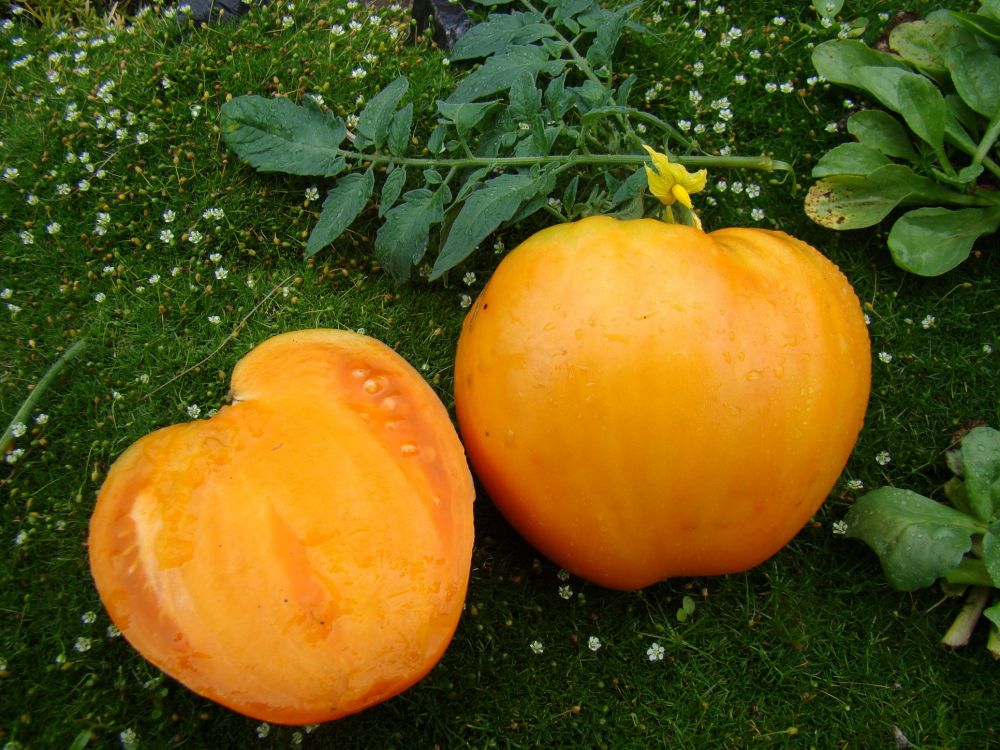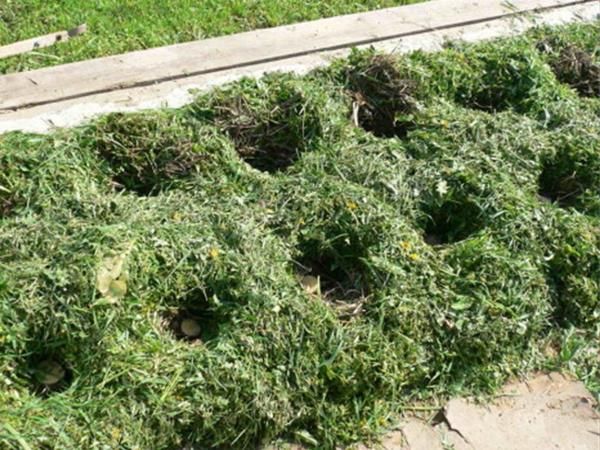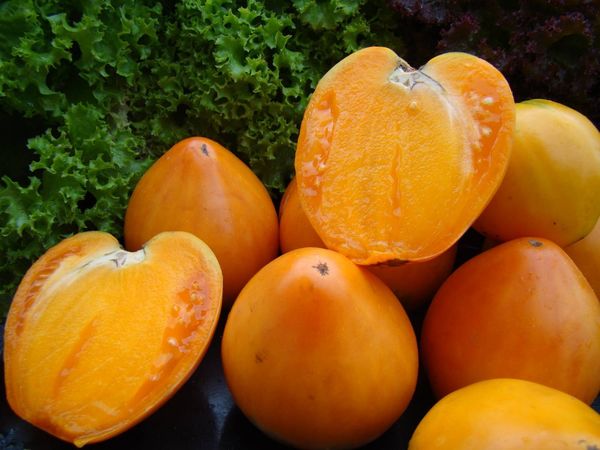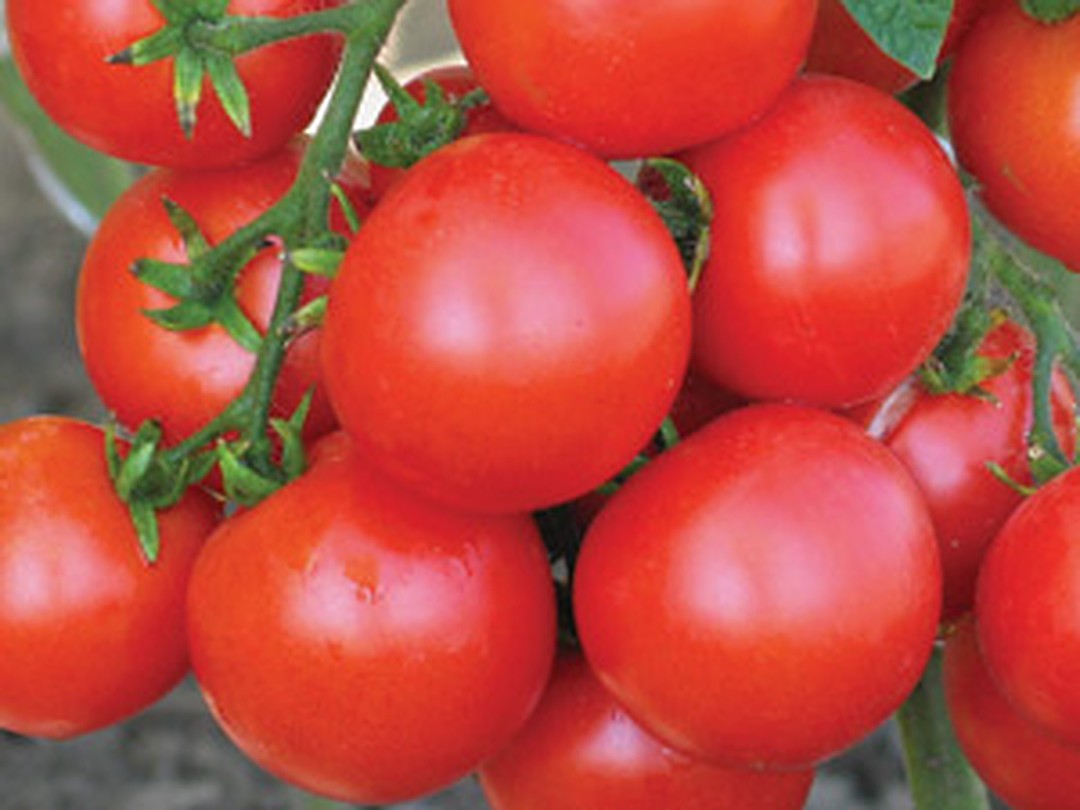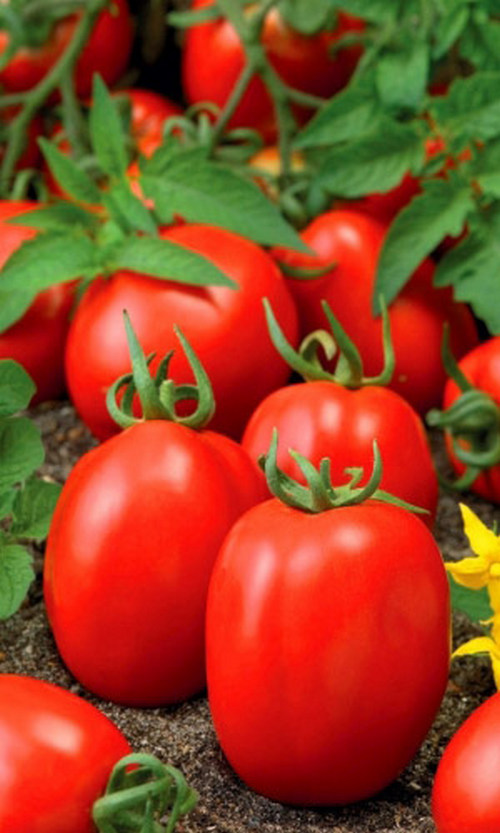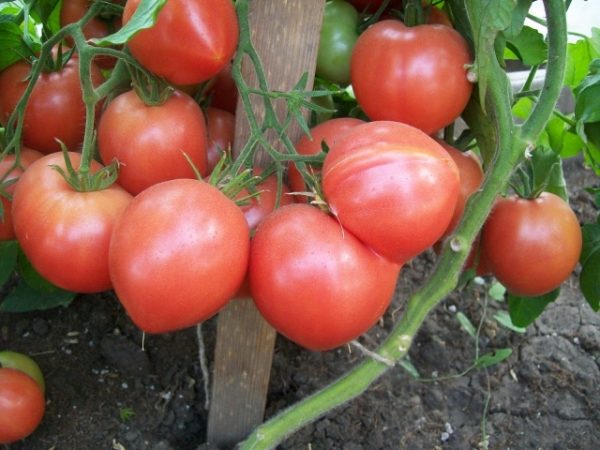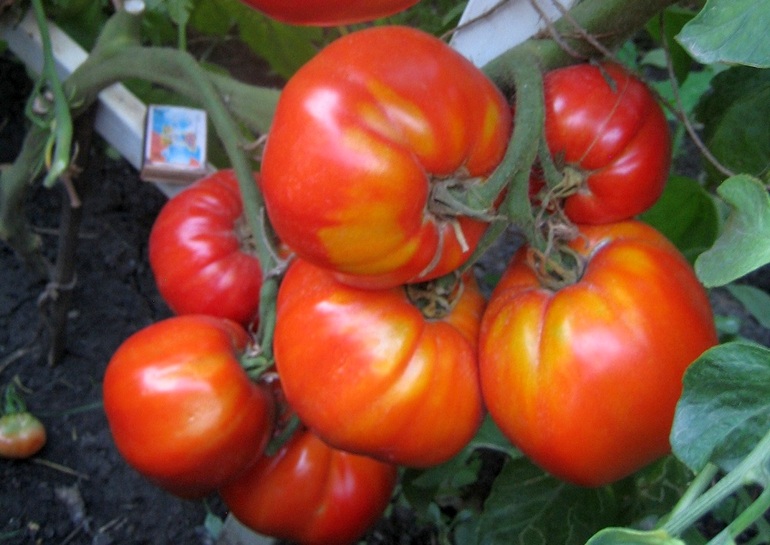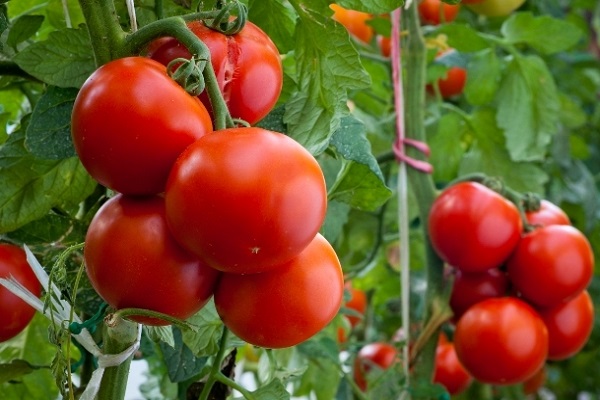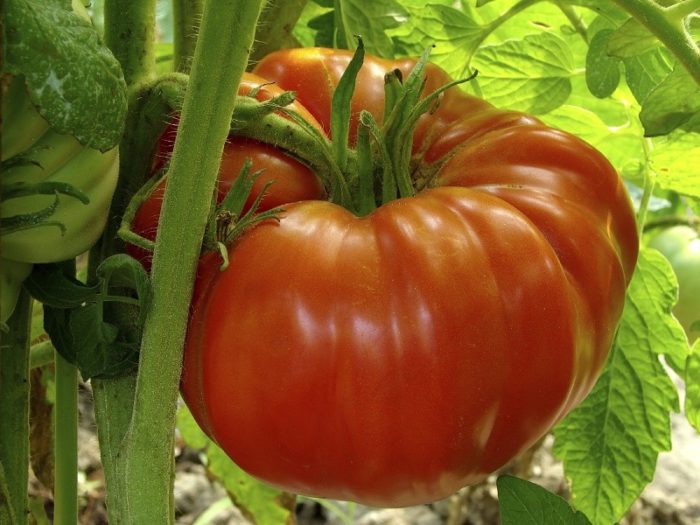Content:
Yellow tomatoes are classified as new experimental varieties. Many do not perceive them as tomatoes at all, but in vain. Golden fruits contain not only a storehouse of useful vitamins, but also uncomplicated care for them.
Tomato Honey Spas is a kind of Solanaceous culture, developed by a group of Siberian scientists headed by V.N.Dederko. In 2004, the "State Sort Commission" registered an appeal for this new variety. In 2006, a patent was issued in the name of V.N. Dederko, the variety is included in the government State Register, as an independent type of tomato for growing in a greenhouse and open ground.
Description of the variety
Tomato Honey Spas characteristic and description of the variety:
- Mid-season, salad variety with colossal productivity. Vegetable harvesting begins 110-115 days after the first shoots. Proper care makes it possible to collect 4-5 kg from the bush. Peduncles are strong, durable. One flower cluster contains up to 5 fruits - this is the optimal number of ovaries for producing large tomatoes. Otherwise, it will be cramped for them, and they will not reach the required size;
- Unlike open ground, the yield of tomatoes grown in greenhouse conditions is 2 times higher;
- The variety is self-pollinated. The flowers are practically odorless, unsightly light yellow shade;
- Fruits: bulk tomatoes - 0.2-0.6 kg, strong, heart-shaped, round-heart-shaped or kidney-shaped, with a flat surface.
The color of an unripe tomato is greenish or light green, with a dark speck at the stalk, mature - warm orange, orange-honey, orange-pink, yellow. The skin is smooth, dense, shiny. The pulp is fleshy, juicy, moderately dense, sugary, with a small number of seeds. The taste is pleasant, sweet, with hardly noticeable sourness, spicy tomato smell.
- Plant: tall bush (indeterminate) - an adult plant is capable of reaching 150-180 cm, in rare cases up to 2 meters. A very strong, branched root system. Stems are thin, round, erect, moderately strong. Large, corrugated green leaves, slightly elongated. Simple inflorescence. The peduncle has no joints.
Features of agricultural technology
Planting of the Honey Spas for seedlings can be started from the fifth day of March. The seed should be sown in light soil, based on garden soil and humus. It is appropriate to use land from the site on which tomatoes will grow in the future.
Seeds and soil must be disinfected.
Seed preparation goes through the following stages:
- Soaking in saline, pacifiers float;
- Disinfection in 1% manganese solution;
- Warming up;
- Growth stimulant treatment (optional);
- Germination.
Sowing seeds is carried out into depressions not exceeding 1.5-2 cm, then they are sprinkled with peat. Optimally created conditions for seeds will help to enhance germination: temperature within 22-25 ° C and good lighting. In watering, you need to know when to stop, the tomato does not like waterlogging.
The picking procedure is carried out no earlier than 2-3 leaves appear on the seedlings.
Mature seedlings are thick-legged and stocky plants with evenly spaced leaves. Long and slender seedlings produce a meager harvest.
The time for planting seedlings in open ground depends on the climatic characteristics of the region. Optimally, when night frosts pass, and a warm temperature is established (≥15). Approximately landing falls in early May.
The site should be well lit by the sun. The soil is selected saturated with organic matter. For the prevention of diseases, the land is recommended after growing other nightshade crops on it: eggplant, potatoes or garlic, onions, cucumbers or carrots.
Before planting, the soil must be loosened up to 20 cm deep, free from large lumps of earth, grass and stones.
The optimal distance between the bushes is 0.7 meter-meter. Adult plants are highly branchy, so 1 sq. m. it is recommended to plant 3 bushes. The holes should be as large as possible so that the root system of the plant fits there freely.
Seedling care:
- immediately after transplanting, the bushes are fixed with trellises and tied up;
- with the growth of the stem, the tying procedure must be repeated several times per season: long and thin stems under the load of weighty fruits can break from gusty and strong winds;
- watering only with warm water;
- irrigation is regular, as the soil dries up;
- top dressing at least 5-6 times per summer (mineral fertilizers rich in phosphorus, potassium);
- create a bush in two or three stems, remove side stepsons;
- systematic loosening and disposal of weeds and pests.
Mandatory feeding:
- The beginning of the growing season. Used organic matter in liquid form: mullein infusion, chicken droppings;
- One month after sowing the seeds. Top dressing with potassium, an excellent option is the use of wood ash (dilute and water at the root);
- Alternation of organic and mineral fertilizers. Several times during the season.
To prevent freezing of young seedlings on cold nights (days) and frost, cover with foil.
It is necessary to water under the bush, water should not fall on the foliage.
For a good ovary, spraying with boric acid solution can be used.
Disease prevention
This tomato is resistant to many diseases of the Nightshade crops, but the likelihood of damage is still there. For prevention, you can spray with special agents, for example, "Fitosporin".
For aphids, you can use a soap solution. When saving from slugs and flying pests, spraying a solution of ammonia helps. And with the help of potassium permanganate, it is easy to get rid of the larvae of various parasites.
Advantages and disadvantages of the variety
Benefits:
- Taste characteristics;
- Commercial appearance;
- Weighty fruits are suitable for slicing fresh salads and producing tomato juice;
- Do not crack;
- High productivity;
- It ripens during the entire period of growth, which makes it possible to harvest fresh crops for a long time;
- Not picky about soil types and care;
- Versatile for growing (open ground, greenhouse);
- Resistance to bad weather conditions: heat resistance, frost resistance;
- Resistant to diseases: gray rot, late blight, tobacco mosaic;
- Long keeping quality, transportability;
- After being removed from a branch, it can mature at room temperature, in a place protected from open light;
- The benefits of fruits for the body, antioxidant, high content of carotene and vitamin C in vegetables.
The varietal feature of yellow tomatoes is the hypoallergenicity of the fruits, which cannot be said about red ones.
Yellow tomatoes have won a special attitude abroad - it is believed there that the systematic use of such tomatoes promises a delayed old age.
Disadvantages:
- Pinching is required, as new shoots constantly appear from the sides of the plant;
- A garter is required (thin and tall stems require support);
- Not suitable for preparations for the winter (large size, lack of acid in the fruits);
- Fruit set is reduced at high (≥ 35) temperatures and low (≤15) temperatures - possibly a huge number of barren flowers.
The variety is easily adaptable to any type of soil and various climatic conditions. It does not matter whether it is Moscow with its moderate climate or harsh Siberia, the main thing is to provide the plant with the necessary care.
Tomato Honey Spas is one of the most popular types. It is prized for its taste and yield - for some it is the most valuable indicator. Just a few bushes on the site will fully meet the needs of the gardener.
